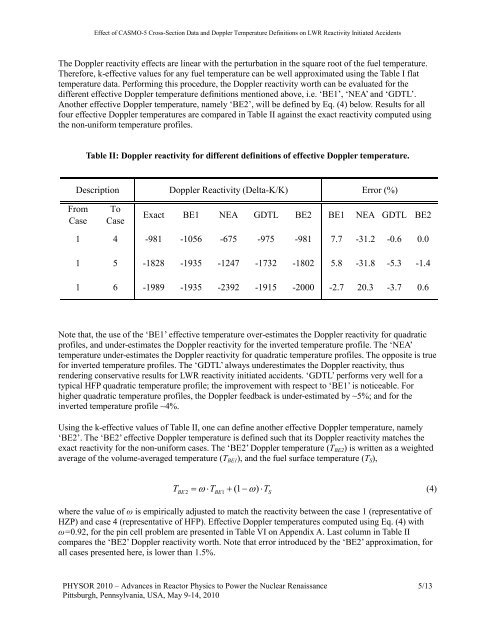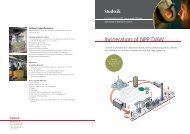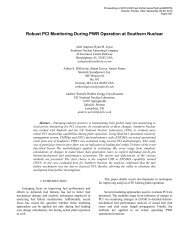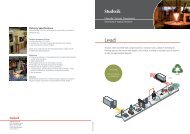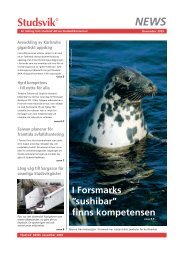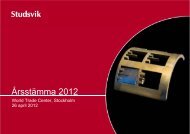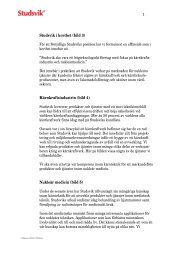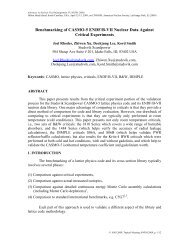Effect of CASMO-5 Cross-Section Data and Doppler ... - Studsvik
Effect of CASMO-5 Cross-Section Data and Doppler ... - Studsvik
Effect of CASMO-5 Cross-Section Data and Doppler ... - Studsvik
You also want an ePaper? Increase the reach of your titles
YUMPU automatically turns print PDFs into web optimized ePapers that Google loves.
<strong>Effect</strong> <strong>of</strong> <strong>CASMO</strong>-5 <strong>Cross</strong>-<strong>Section</strong> <strong>Data</strong> <strong>and</strong> <strong>Doppler</strong> Temperature Definitions on LWR Reactivity Initiated AccidentsThe <strong>Doppler</strong> reactivity effects are linear with the perturbation in the square root <strong>of</strong> the fuel temperature.Therefore, k-effective values for any fuel temperature can be well approximated using the Table I flattemperature data. Performing this procedure, the <strong>Doppler</strong> reactivity worth can be evaluated for thedifferent effective <strong>Doppler</strong> temperature definitions mentioned above, i.e. ‘BE1’, ‘NEA’ <strong>and</strong> ‘GDTL’.Another effective <strong>Doppler</strong> temperature, namely ‘BE2’, will be defined by Eq. (4) below. Results for allfour effective <strong>Doppler</strong> temperatures are compared in Table II against the exact reactivity computed usingthe non-uniform temperature pr<strong>of</strong>iles.Table II: <strong>Doppler</strong> reactivity for different definitions <strong>of</strong> effective <strong>Doppler</strong> temperature.Description<strong>Doppler</strong> Reactivity (Delta-K/K)Error (%)FromCaseToCaseExact BE1 NEA GDTL BE2 BE1 NEA GDTL BE21 4 -981 -1056 -675 -975 -981 7.7 -31.2 -0.6 0.01 5 -1828 -1935 -1247 -1732 -1802 5.8 -31.8 -5.3 -1.41 6 -1989 -1935 -2392 -1915 -2000 -2.7 20.3 -3.7 0.6Note that, the use <strong>of</strong> the ‘BE1’ effective temperature over-estimates the <strong>Doppler</strong> reactivity for quadraticpr<strong>of</strong>iles, <strong>and</strong> under-estimates the <strong>Doppler</strong> reactivity for the inverted temperature pr<strong>of</strong>ile. The ‘NEA’temperature under-estimates the <strong>Doppler</strong> reactivity for quadratic temperature pr<strong>of</strong>iles. The opposite is truefor inverted temperature pr<strong>of</strong>iles. The ‘GDTL’ always underestimates the <strong>Doppler</strong> reactivity, thusrendering conservative results for LWR reactivity initiated accidents. ‘GDTL’ performs very well for atypical HFP quadratic temperature pr<strong>of</strong>ile; the improvement with respect to ‘BE1’ is noticeable. Forhigher quadratic temperature pr<strong>of</strong>iles, the <strong>Doppler</strong> feedback is under-estimated by ~5%; <strong>and</strong> for theinverted temperature pr<strong>of</strong>ile ~4%.Using the k-effective values <strong>of</strong> Table II, one can define another effective <strong>Doppler</strong> temperature, namely‘BE2’. The ‘BE2’ effective <strong>Doppler</strong> temperature is defined such that its <strong>Doppler</strong> reactivity matches theexact reactivity for the non-uniform cases. The ‘BE2’ <strong>Doppler</strong> temperature (T BE2 ) is written as a weightedaverage <strong>of</strong> the volume-averaged temperature (T BE1 ), <strong>and</strong> the fuel surface temperature (T S ), TT)1 ((4)BE 2 BE1where the value <strong>of</strong> is empirically adjusted to match the reactivity between the case 1 (representative <strong>of</strong>HZP) <strong>and</strong> case 4 (representative <strong>of</strong> HFP). <strong>Effect</strong>ive <strong>Doppler</strong> temperatures computed using Eq. (4) with0.92, for the pin cell problem are presented in Table VI on Appendix A. Last column in Table IIcompares the ‘BE2’ <strong>Doppler</strong> reactivity worth. Note that error introduced by the ‘BE2’ approximation, forall cases presented here, is lower than 1.5%.SPHYSOR 2010 – Advances in Reactor Physics to Power the Nuclear RenaissancePittsburgh, Pennsylvania, USA, May 9-14, 20105/13


